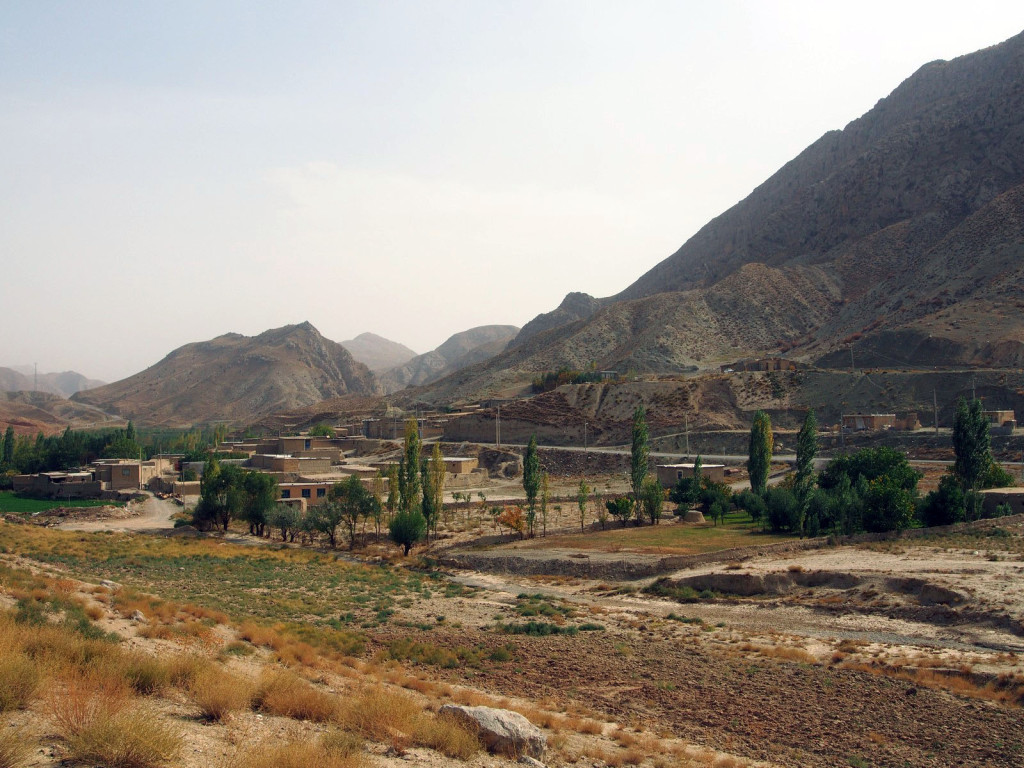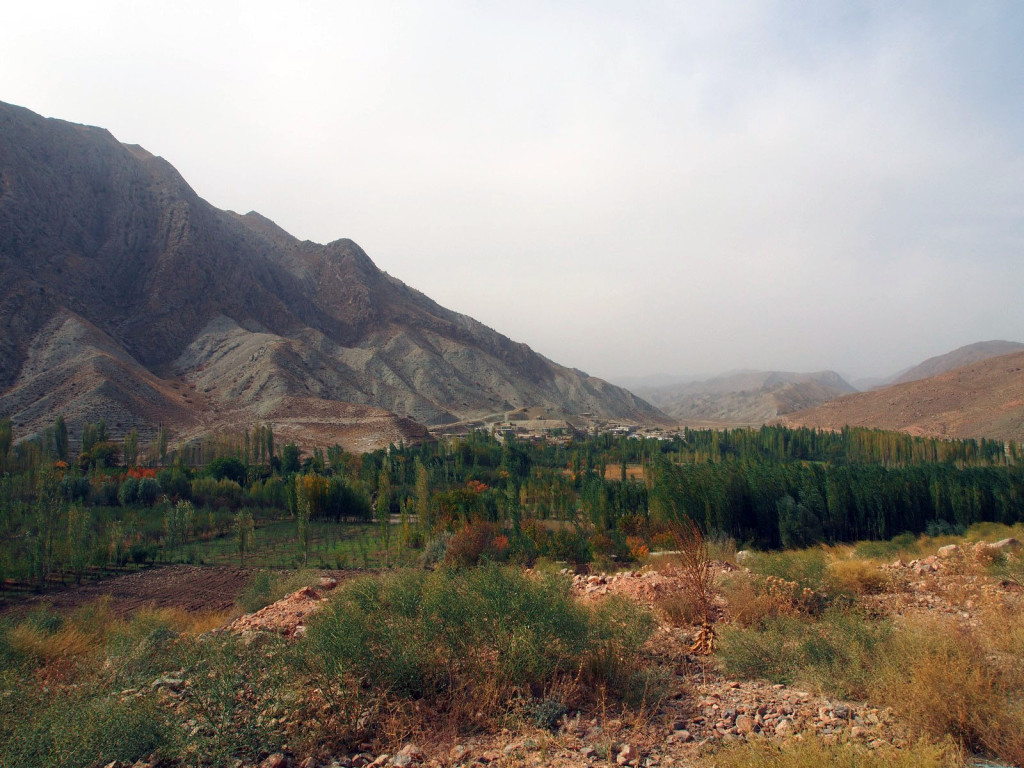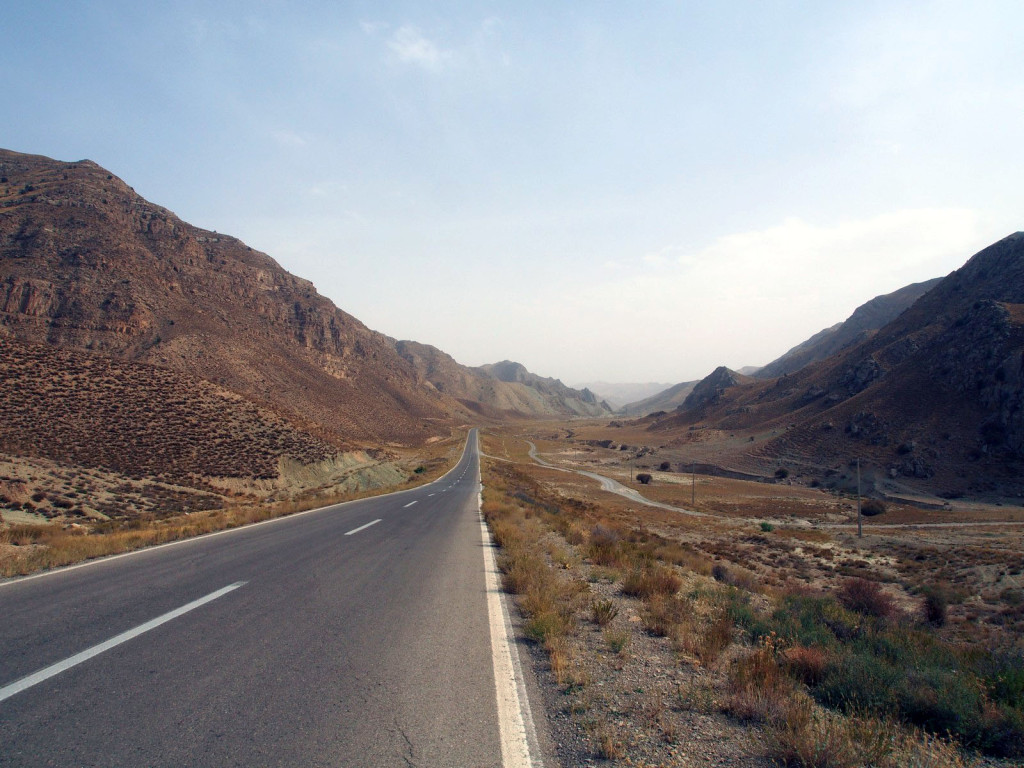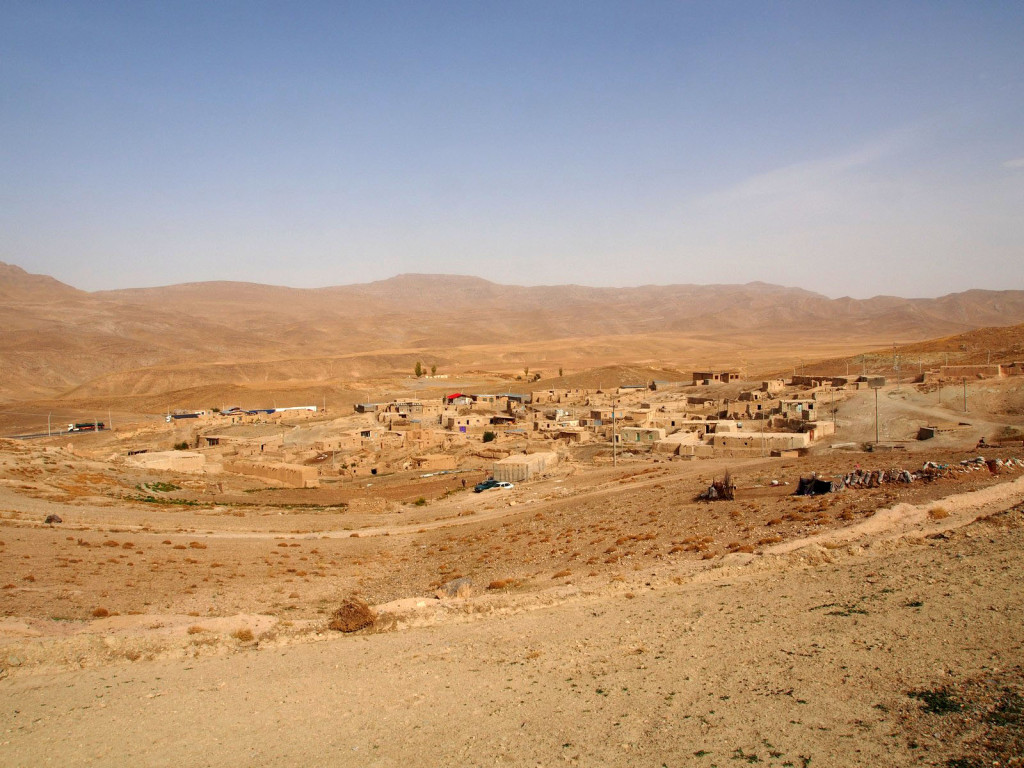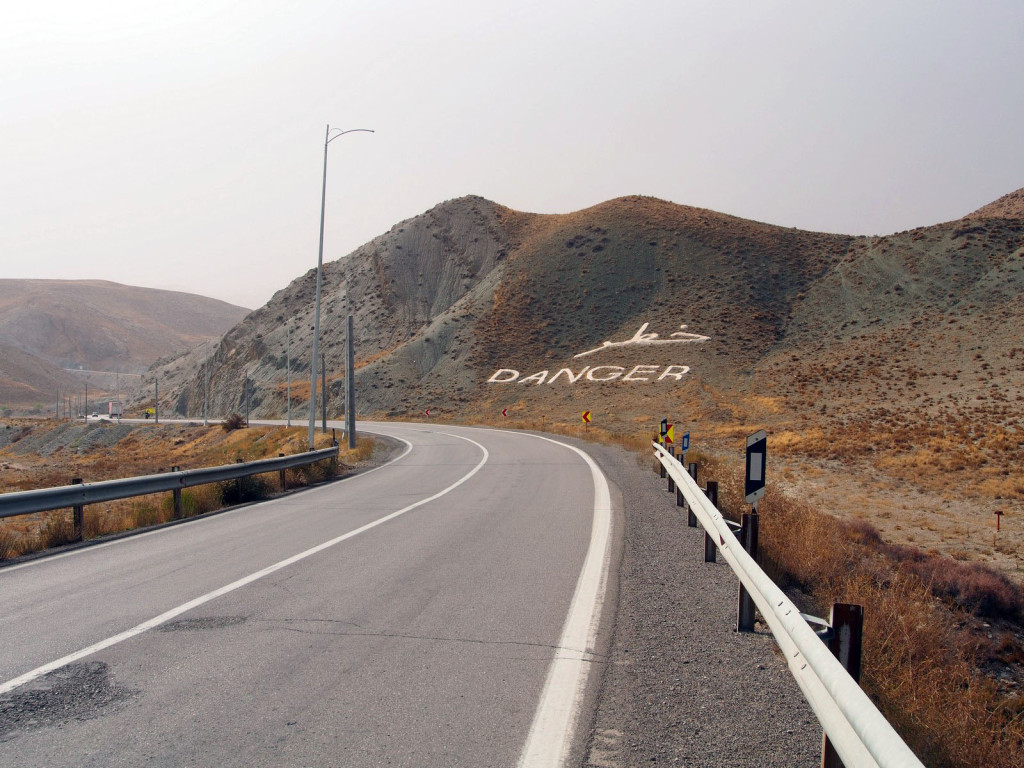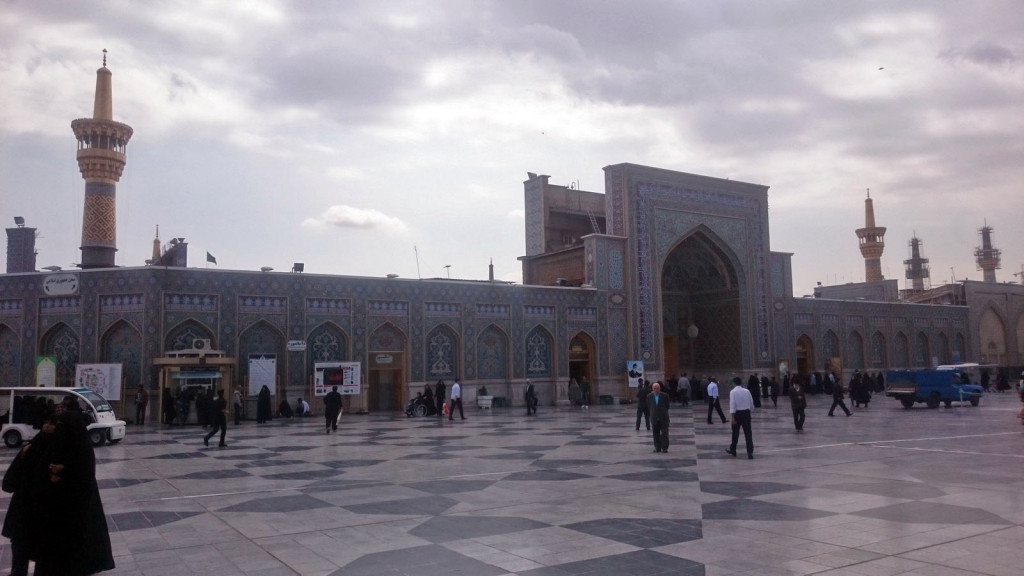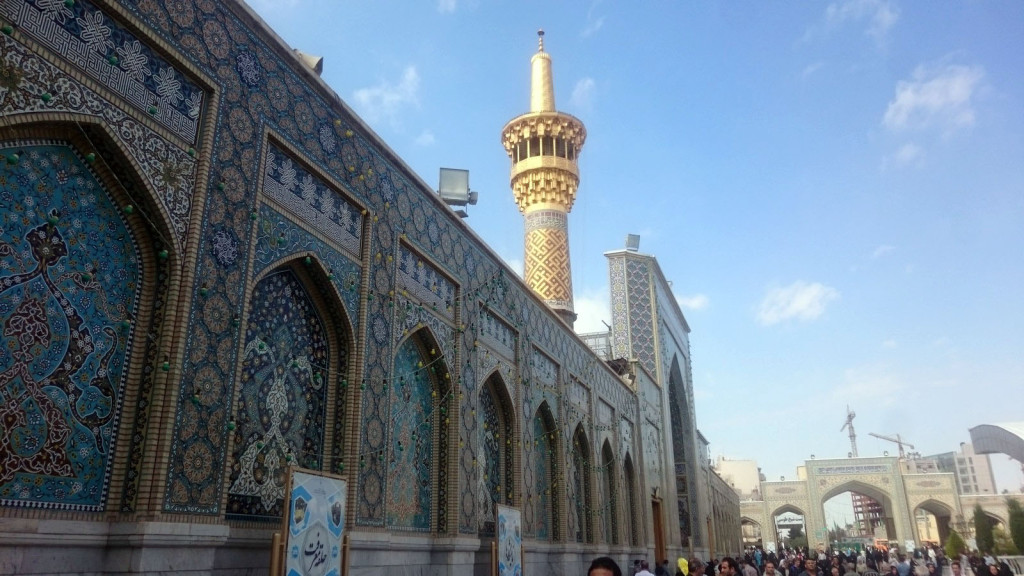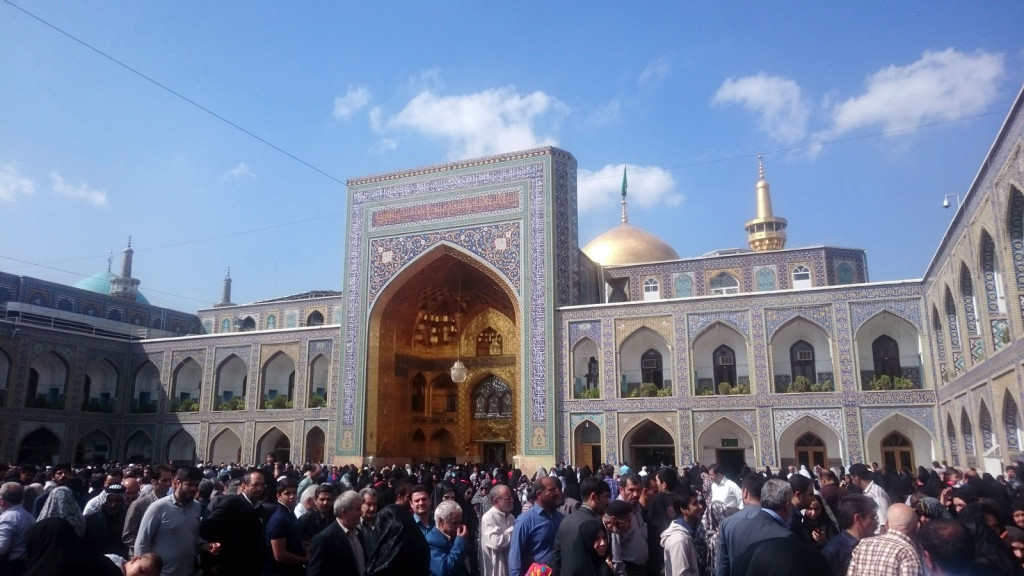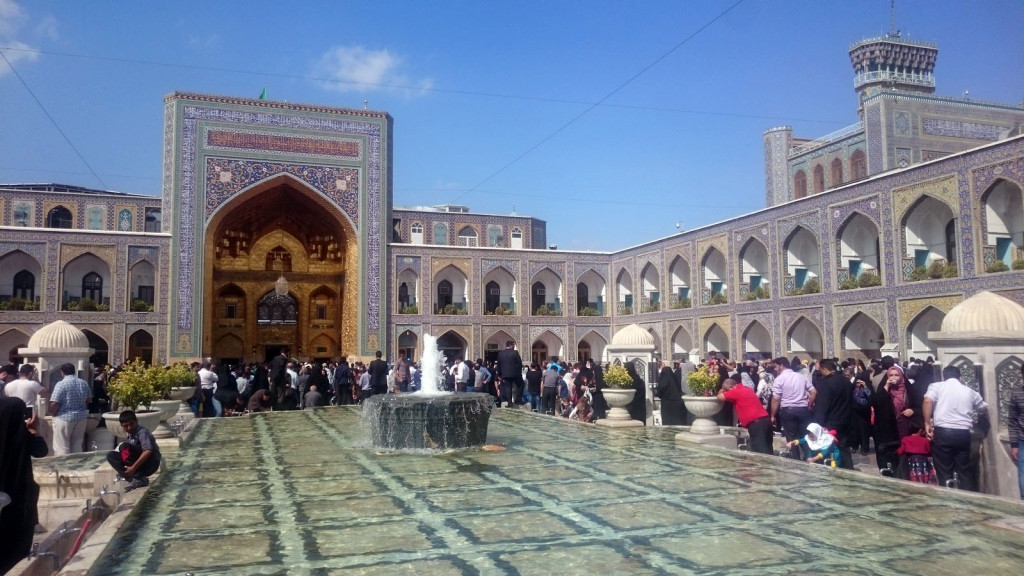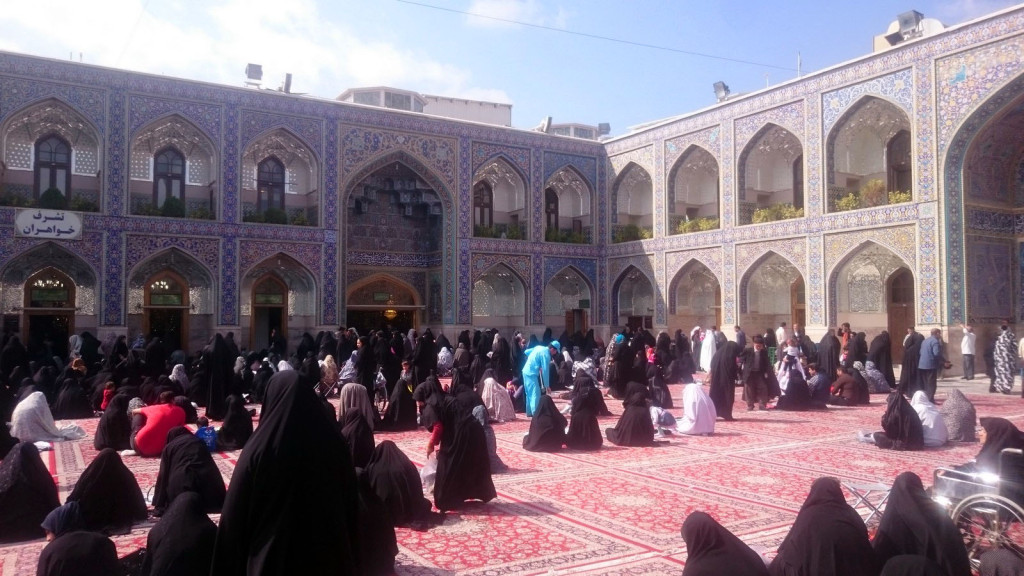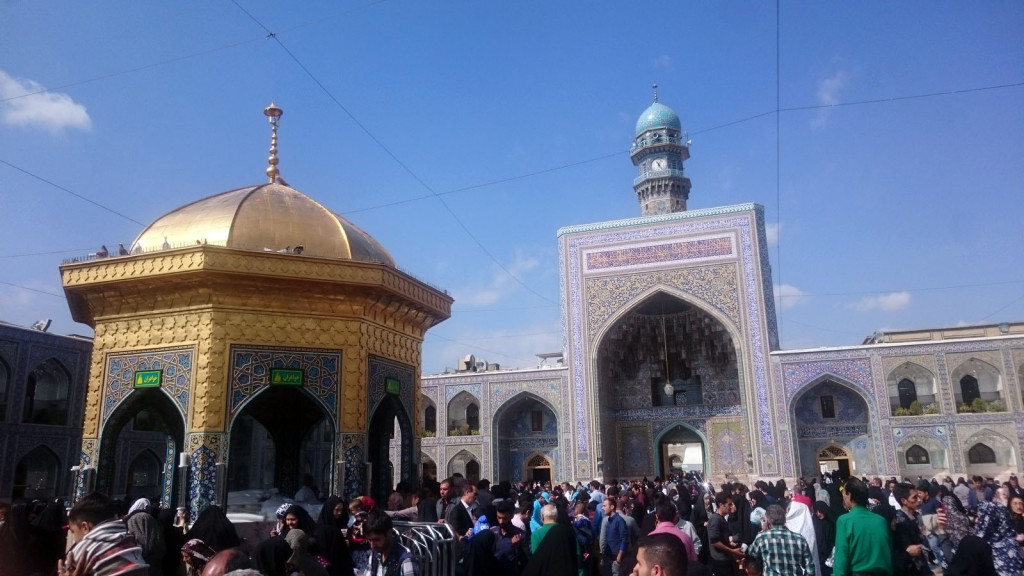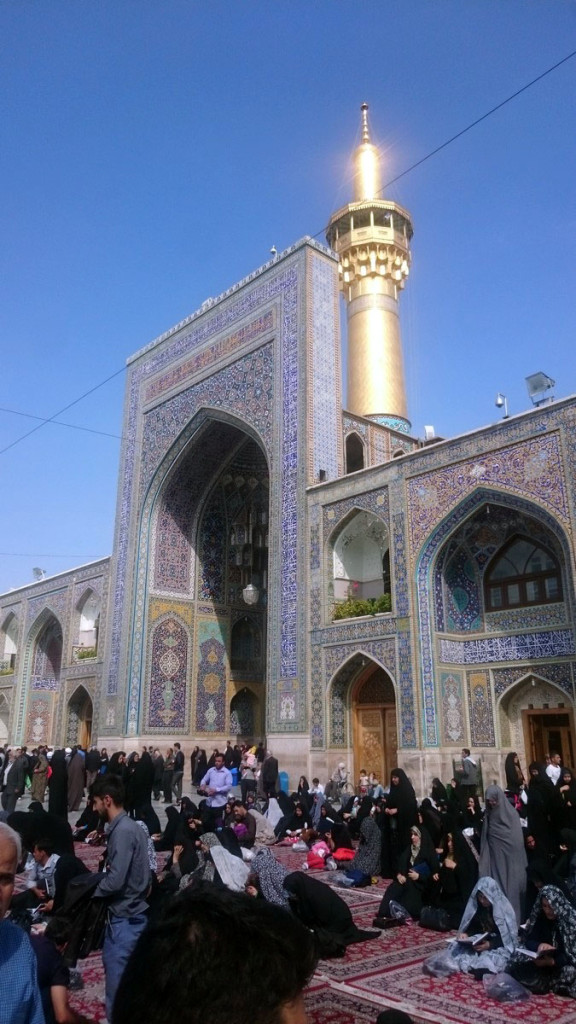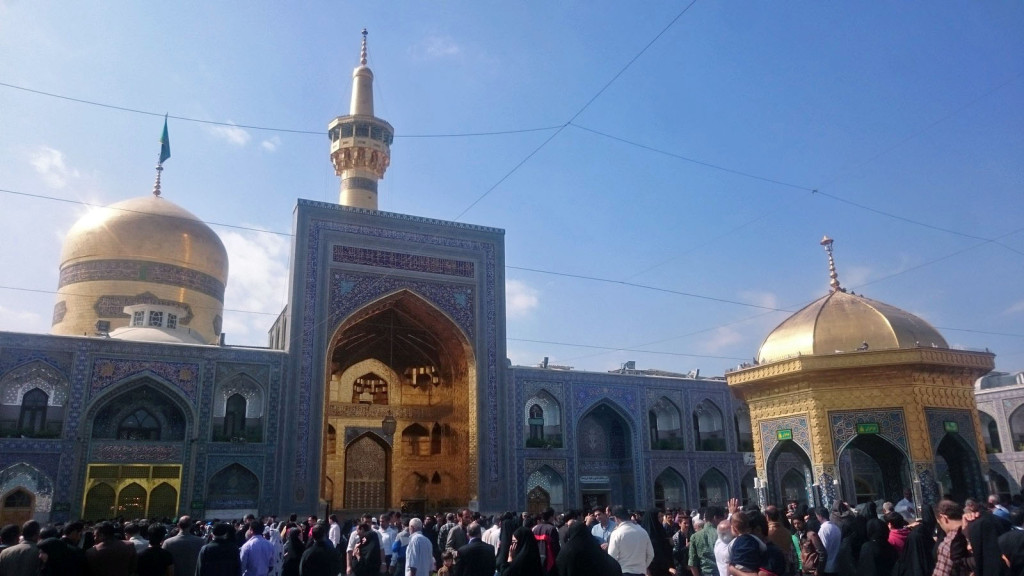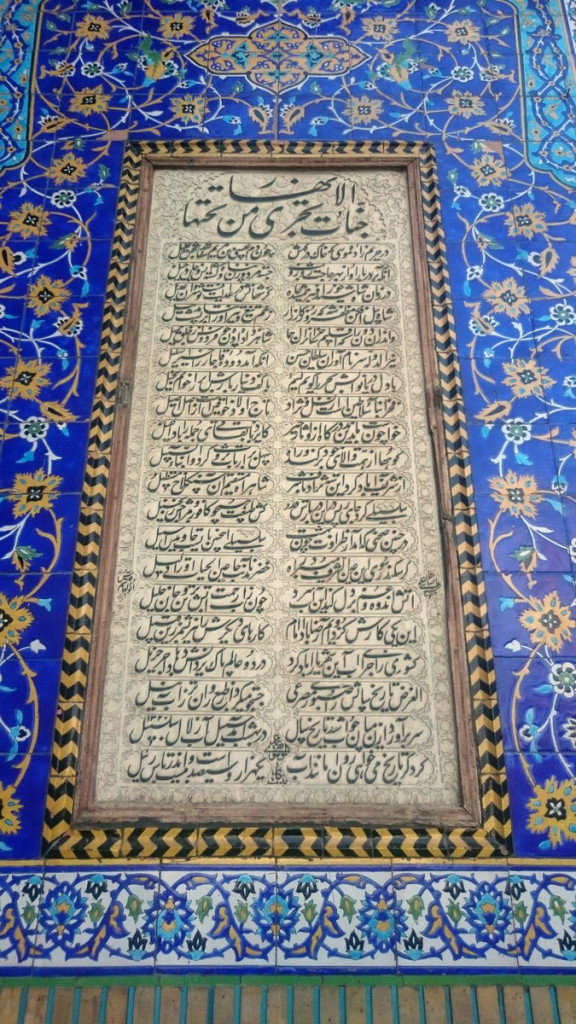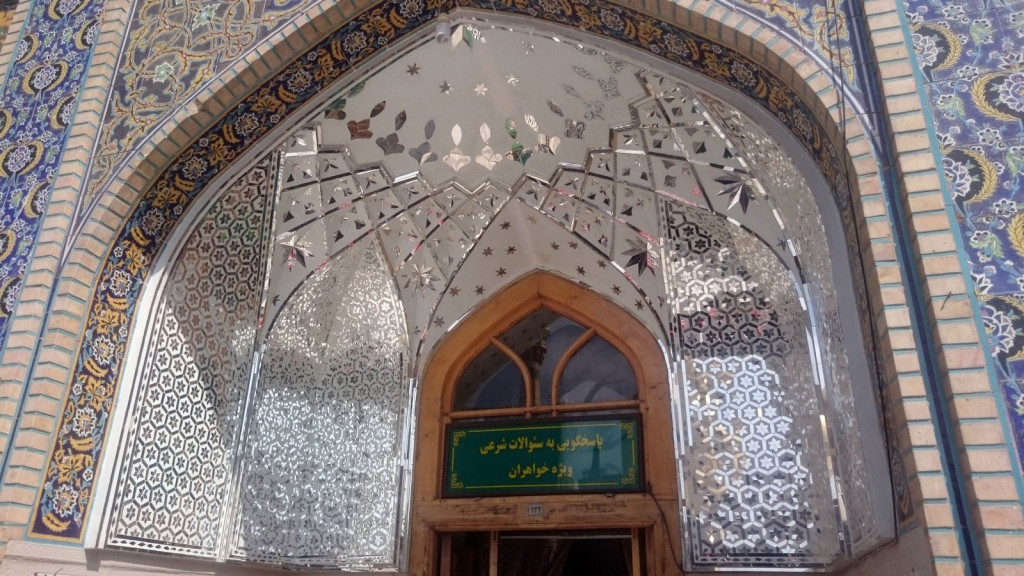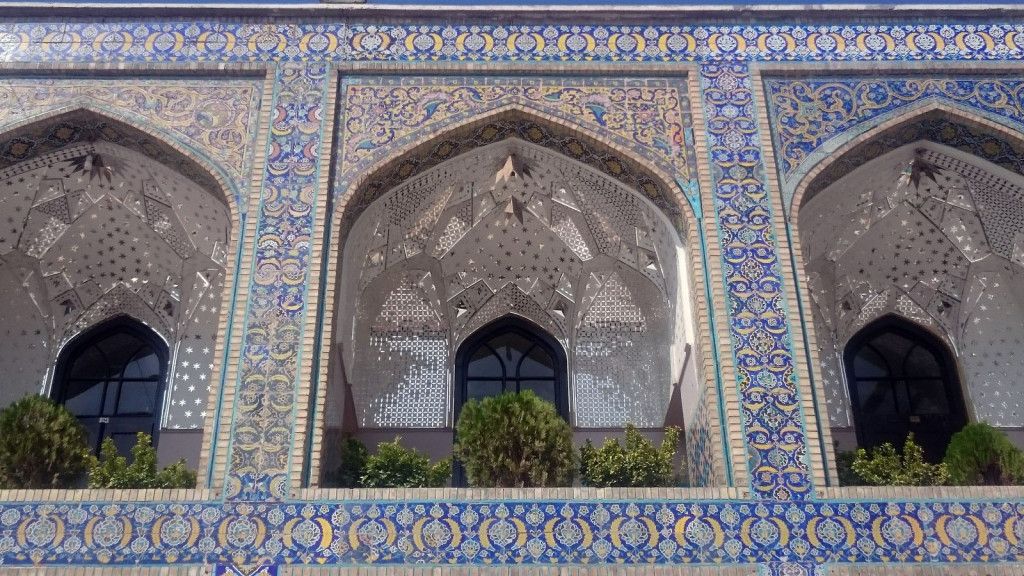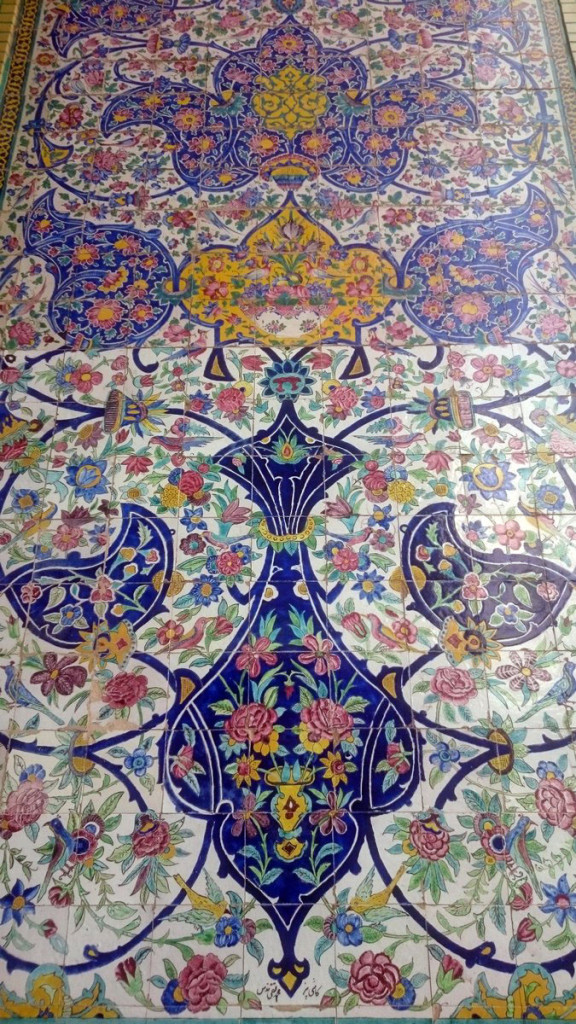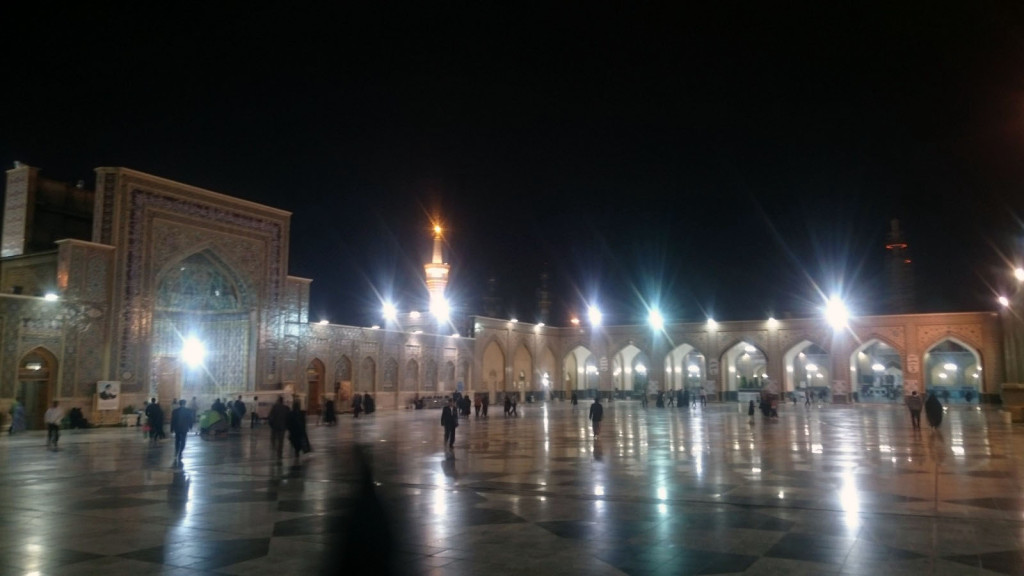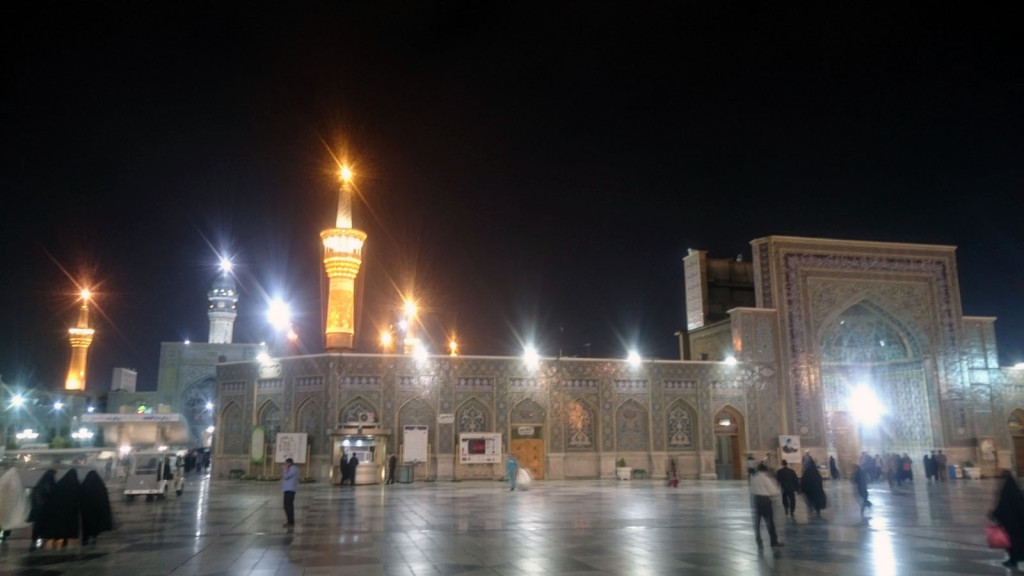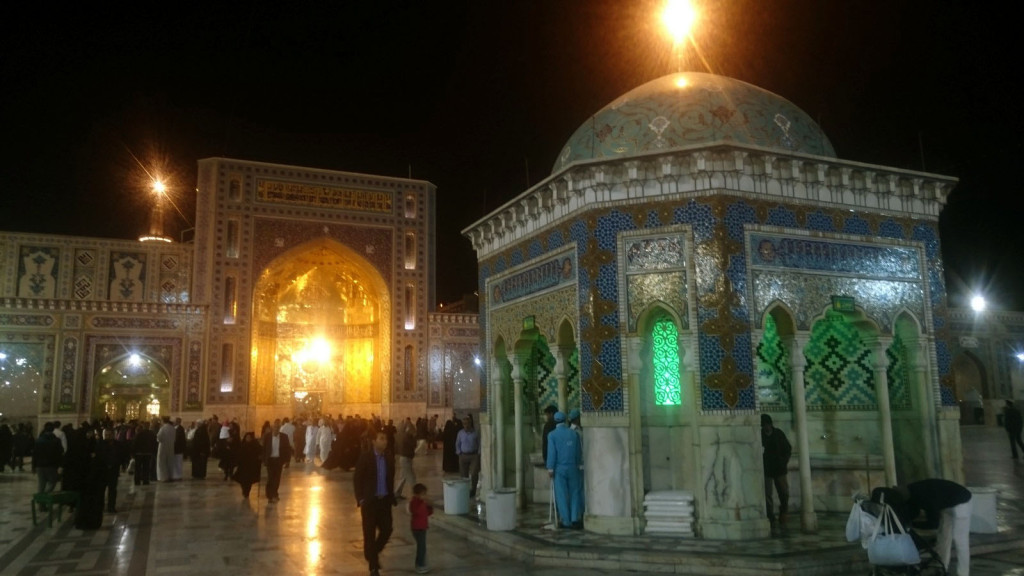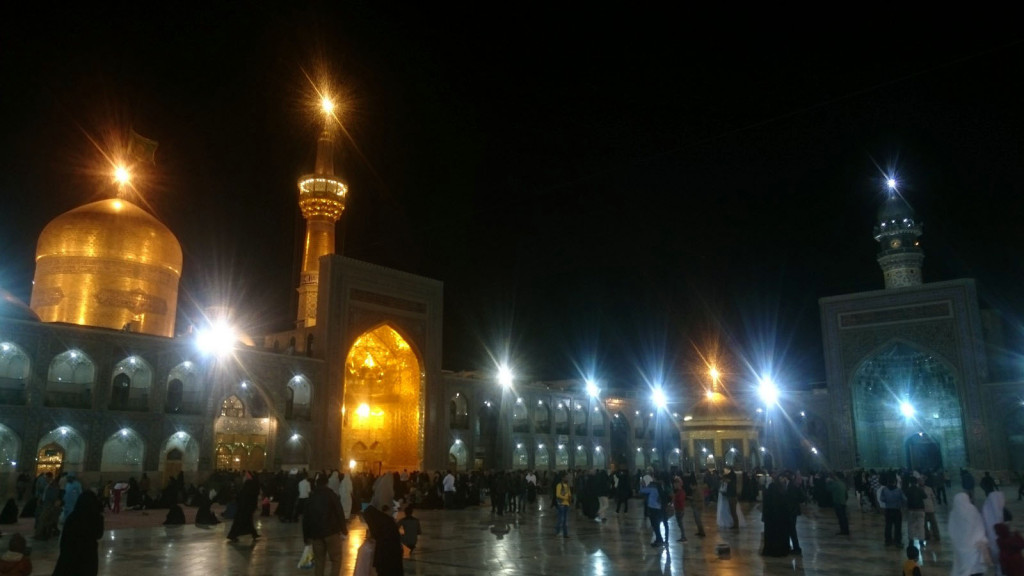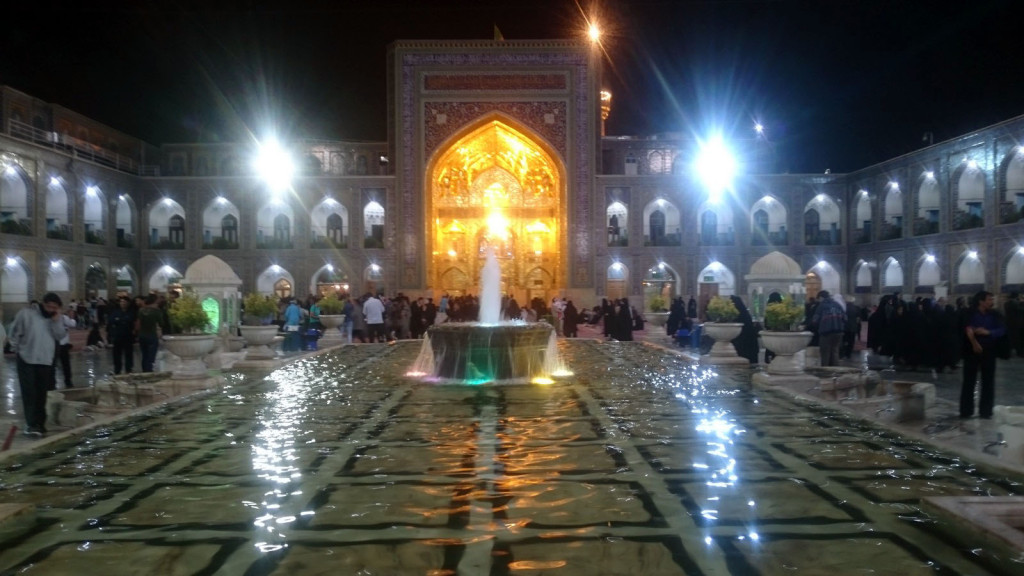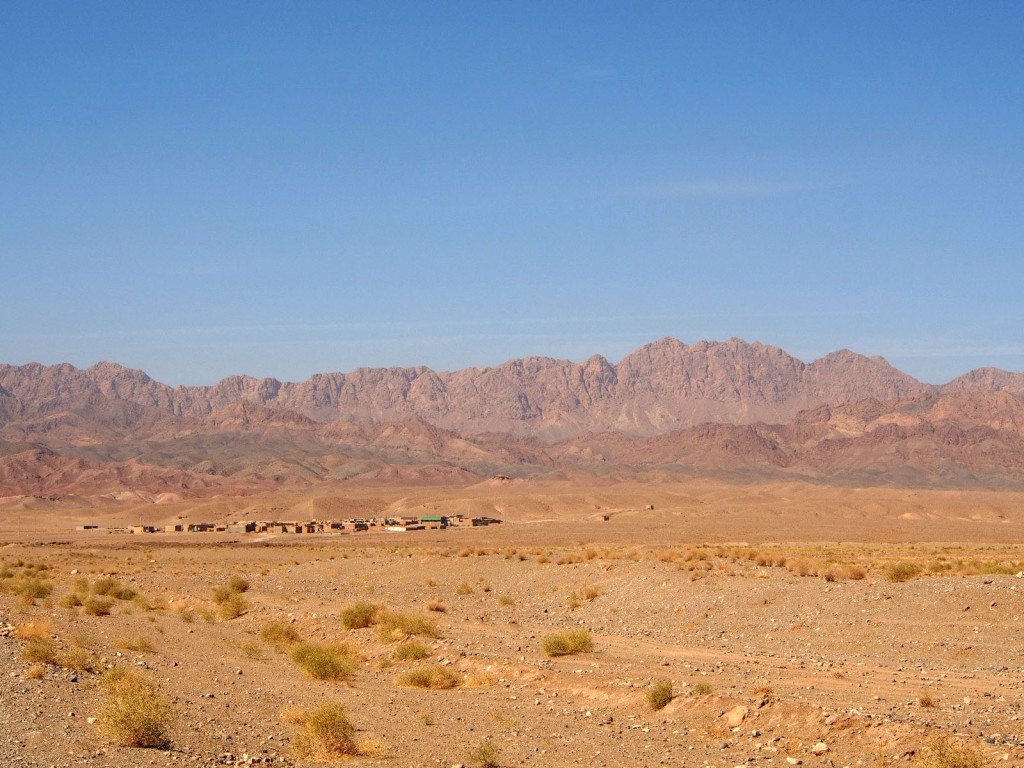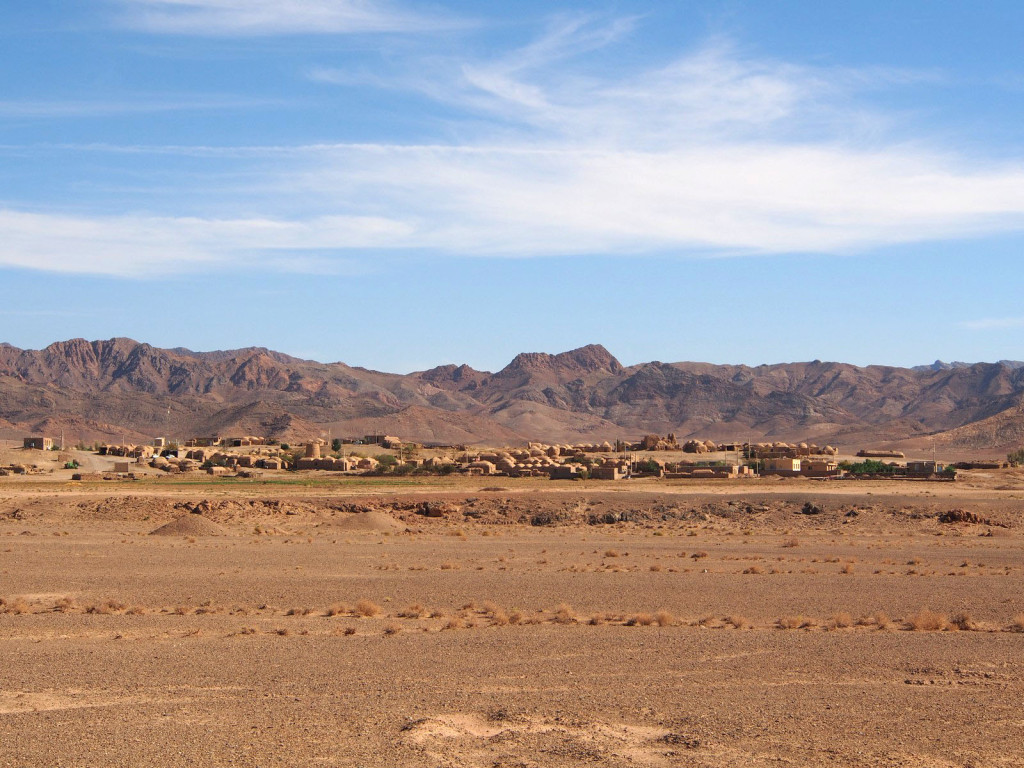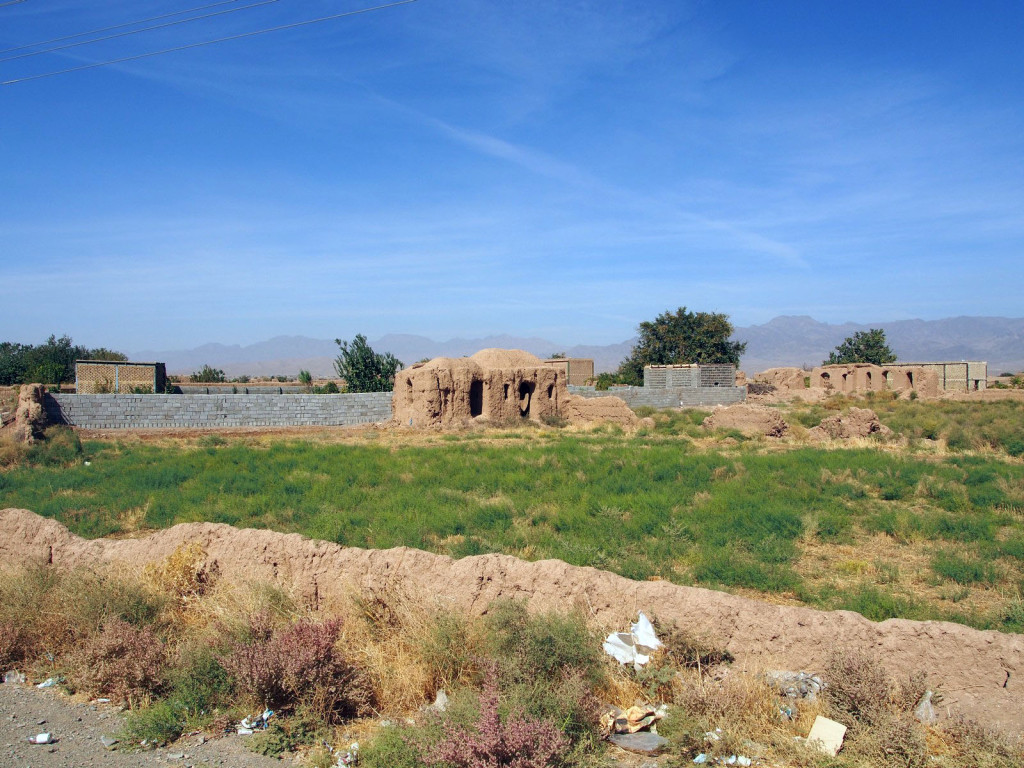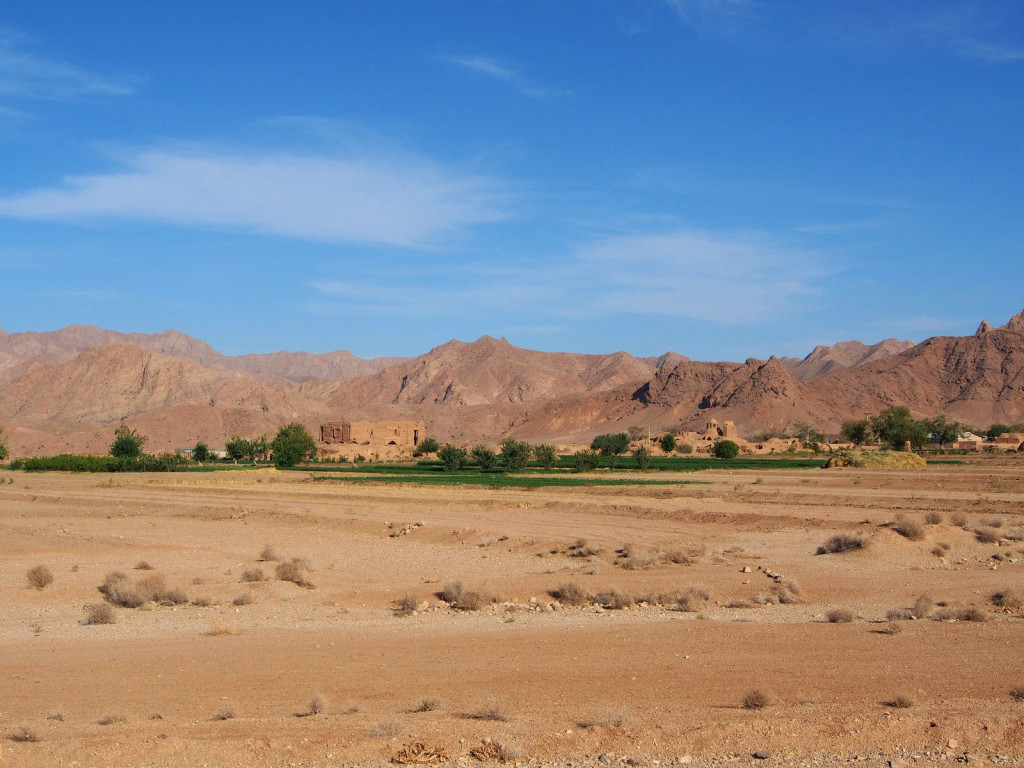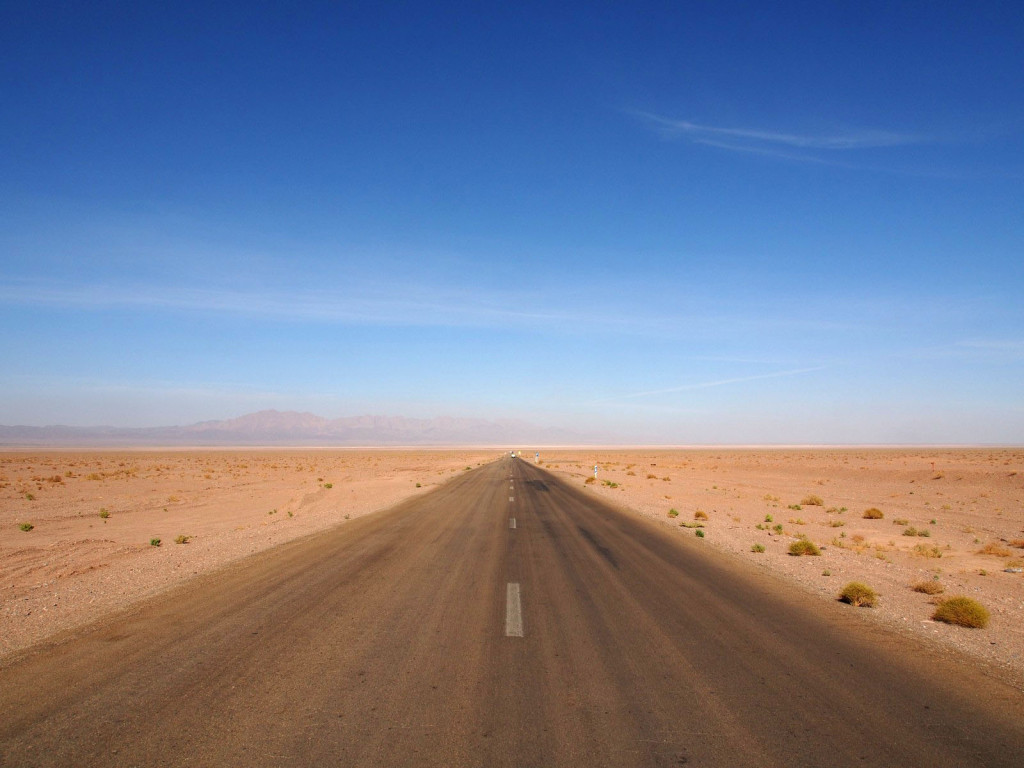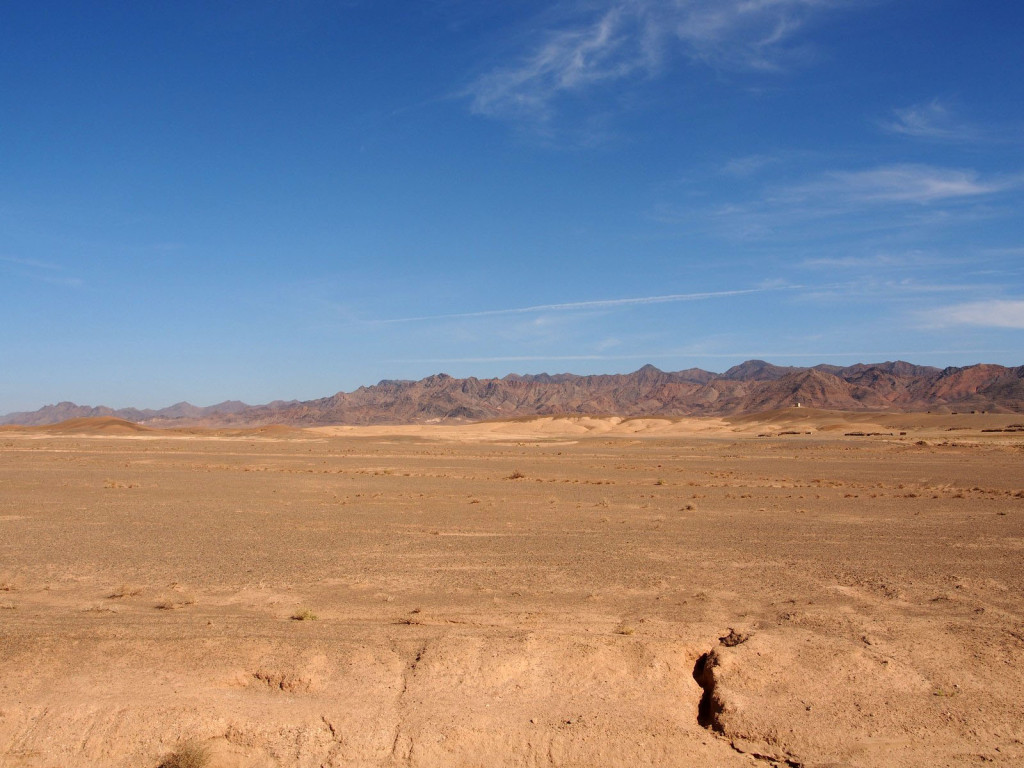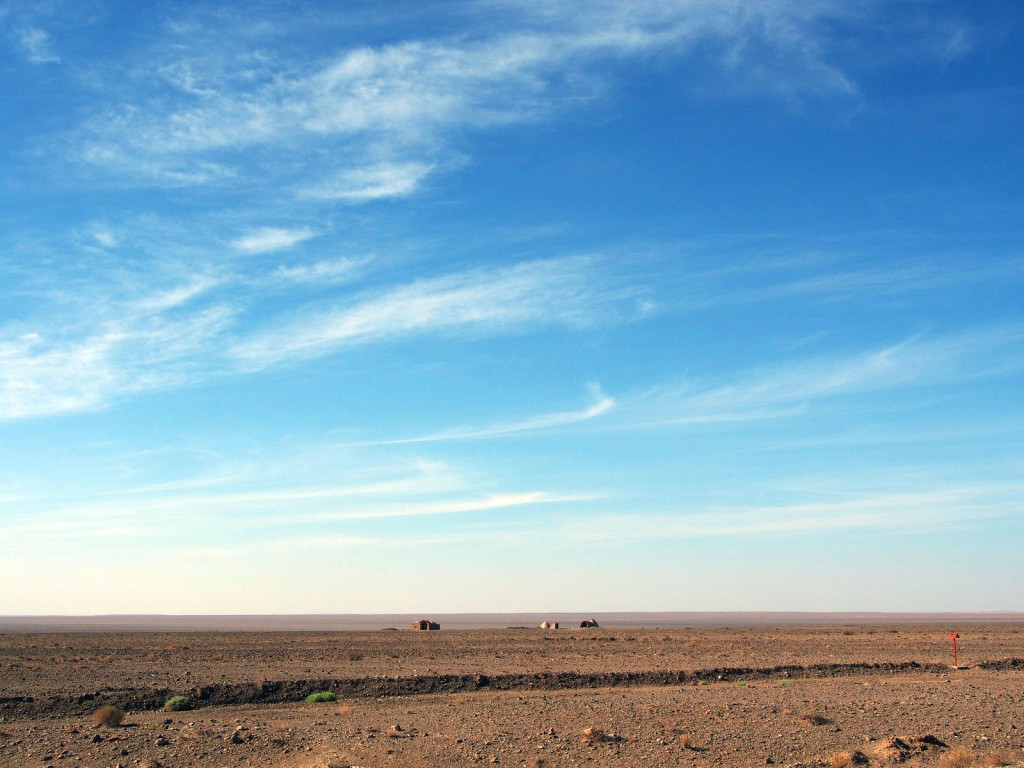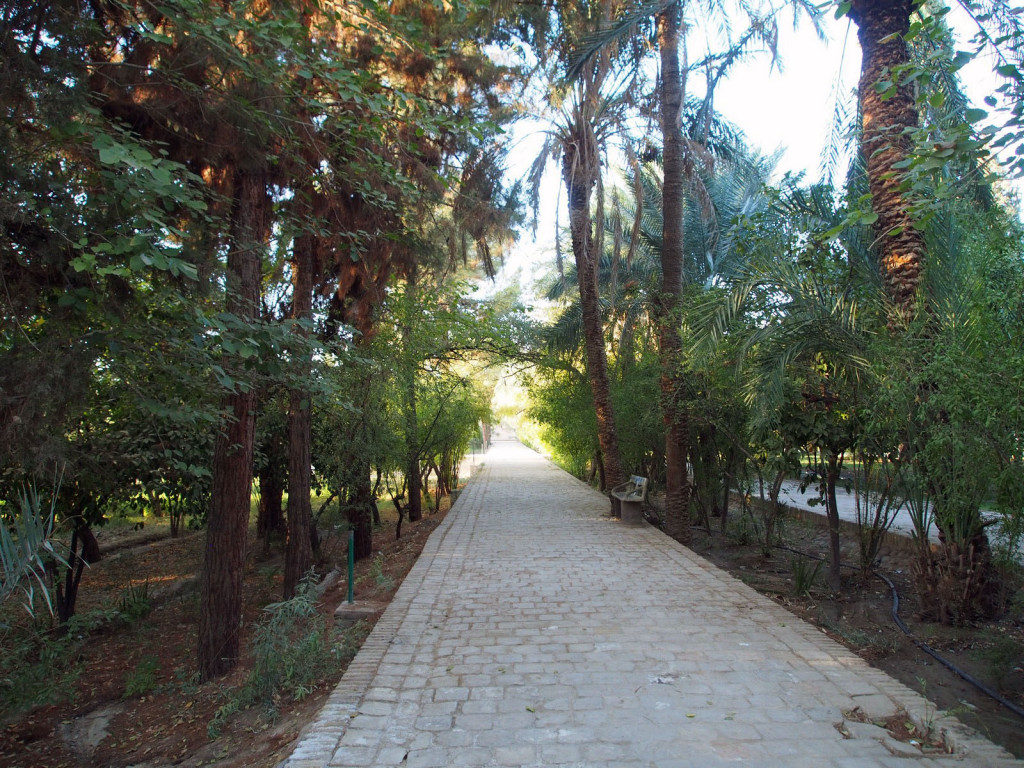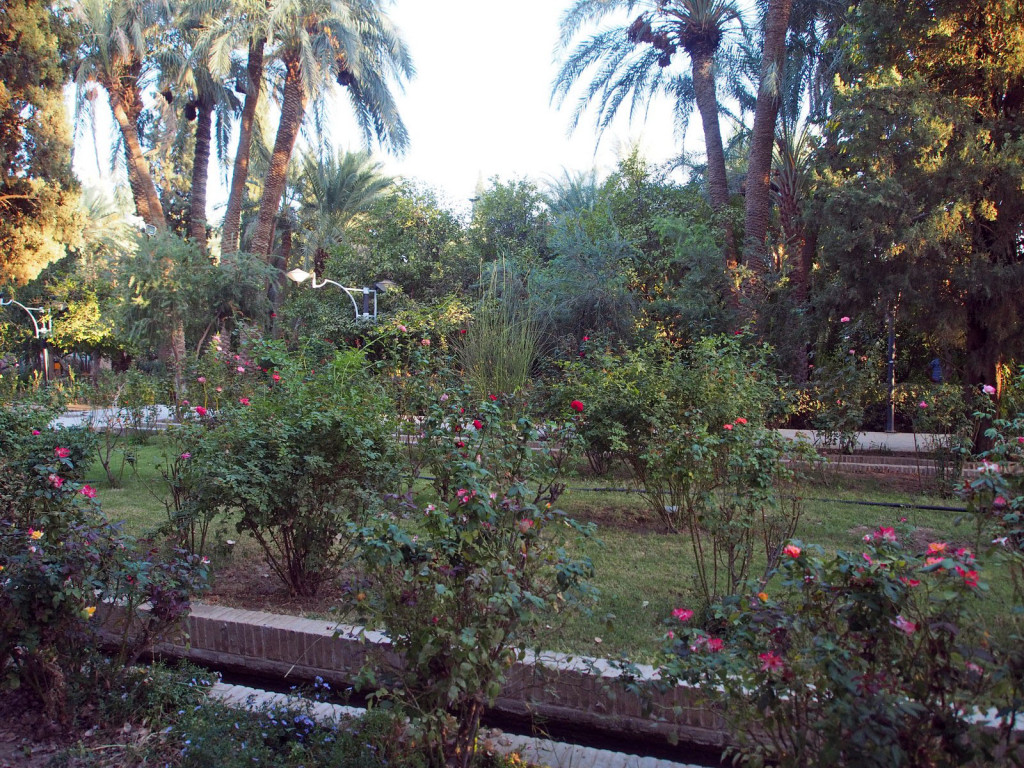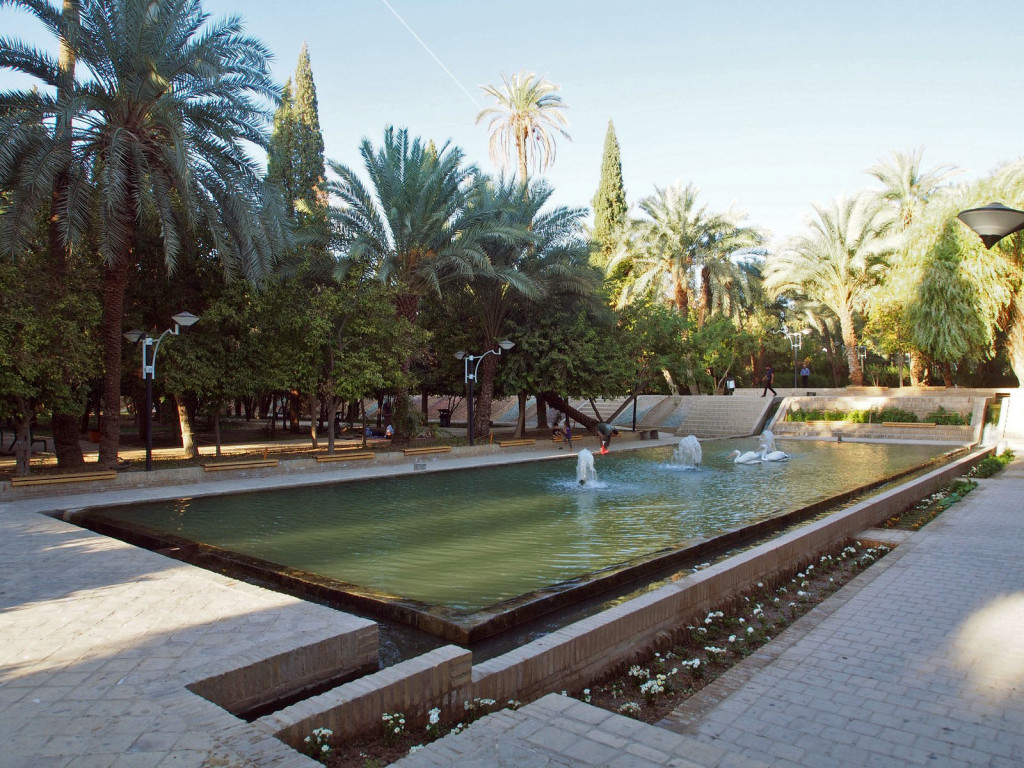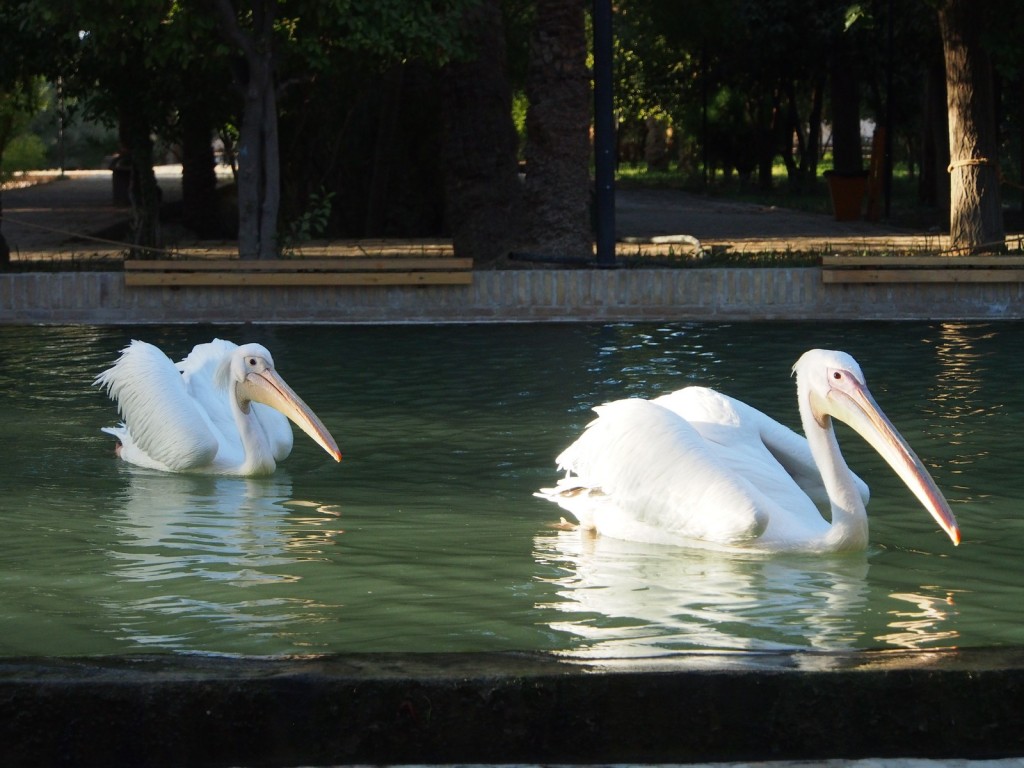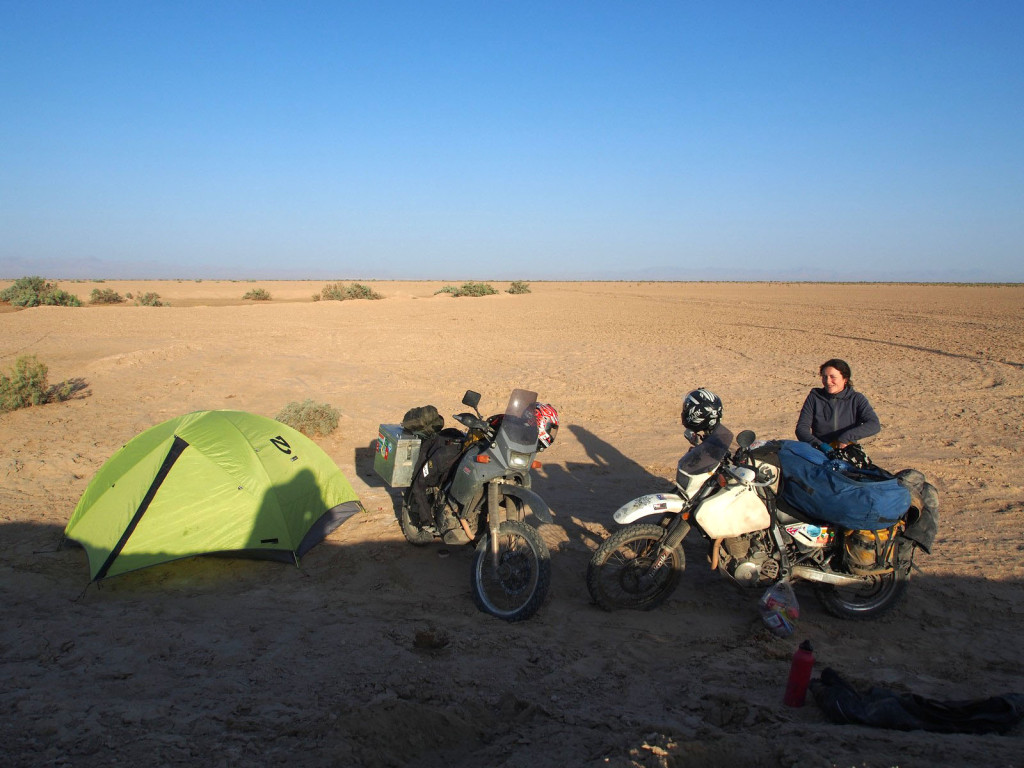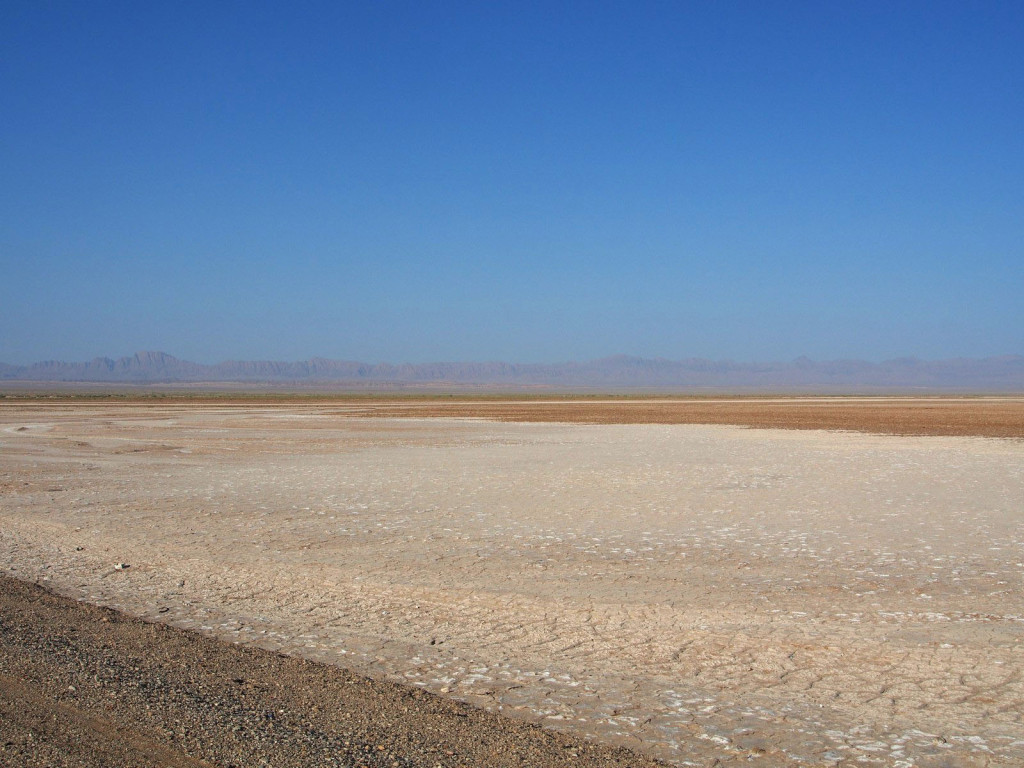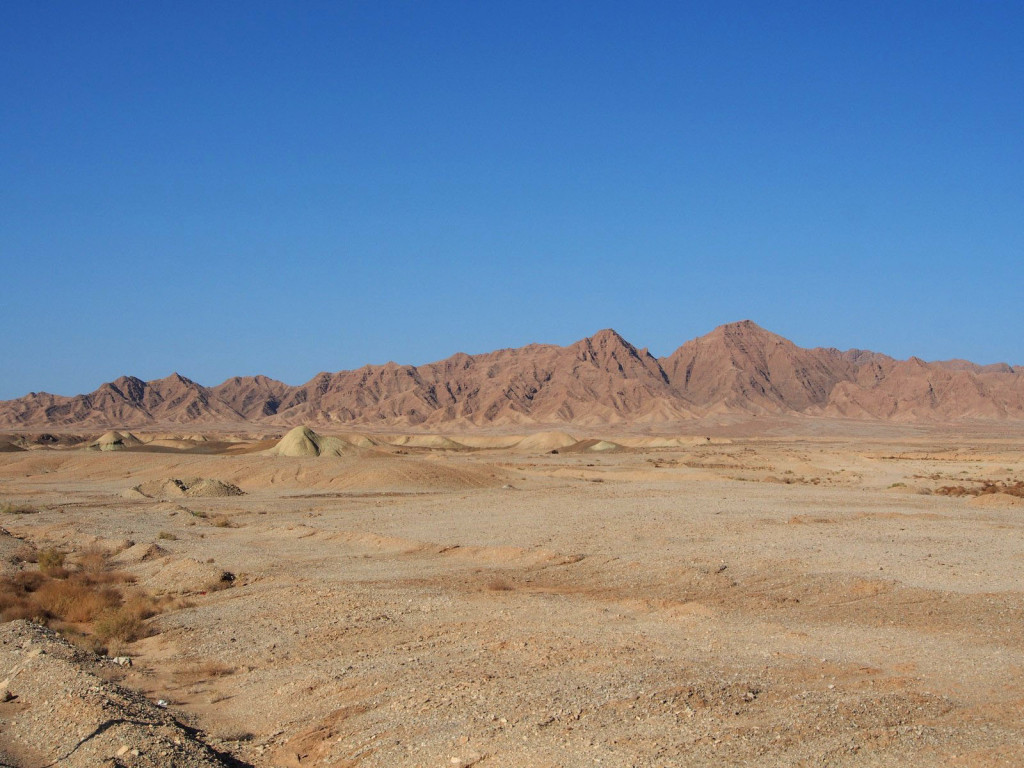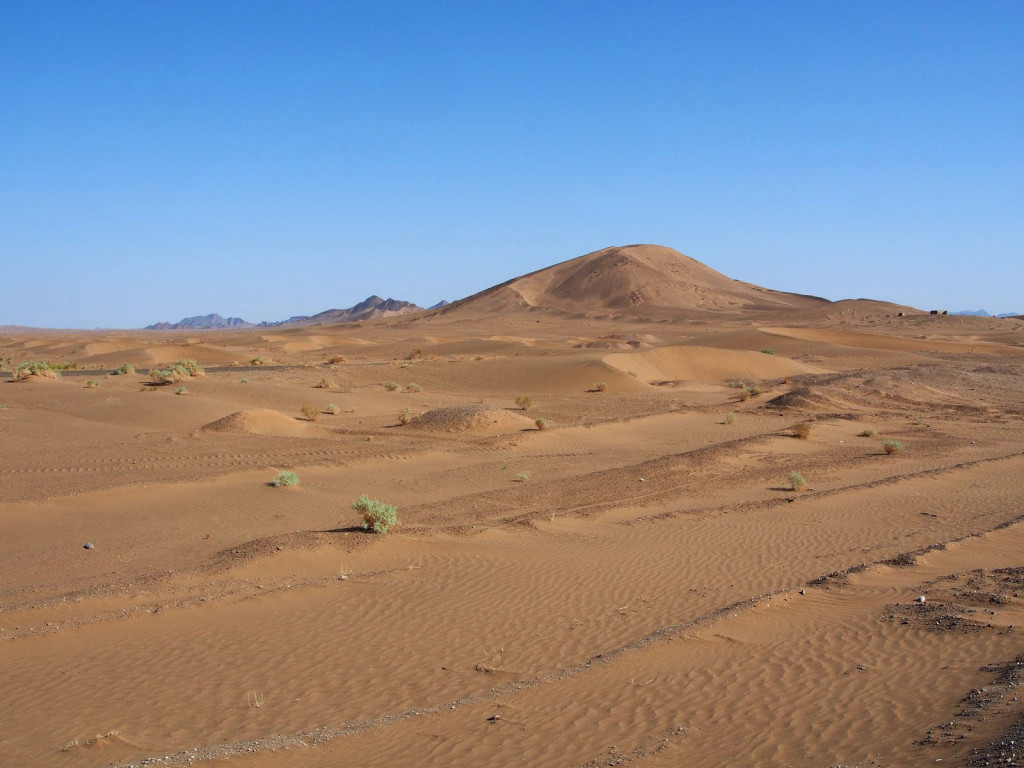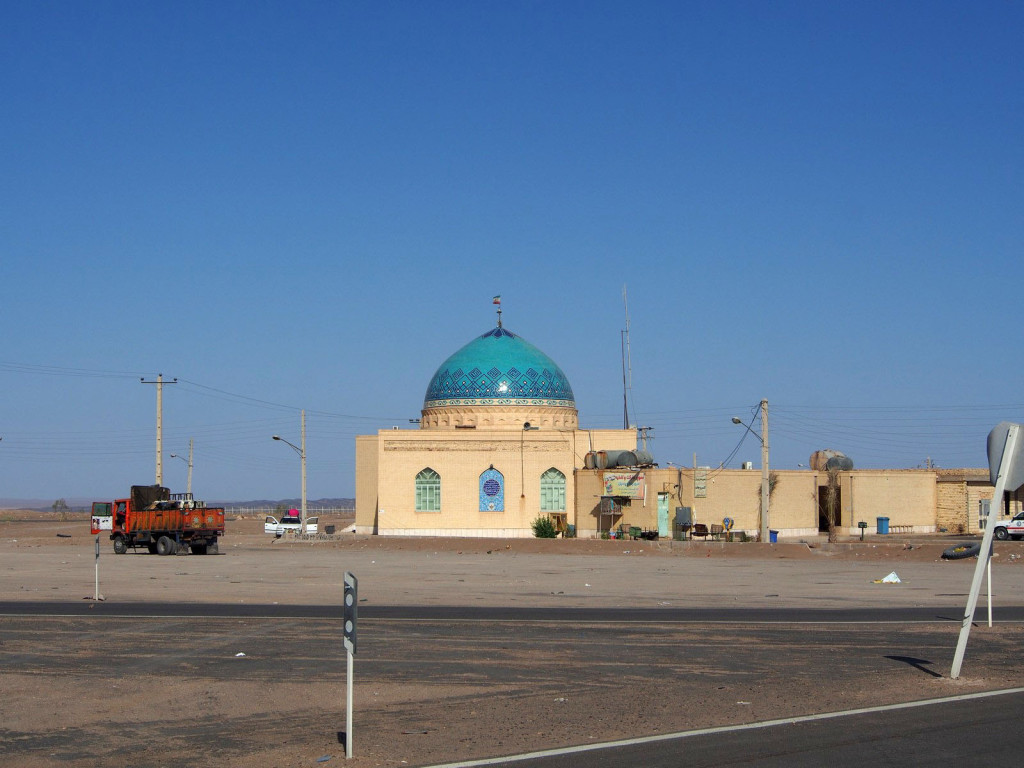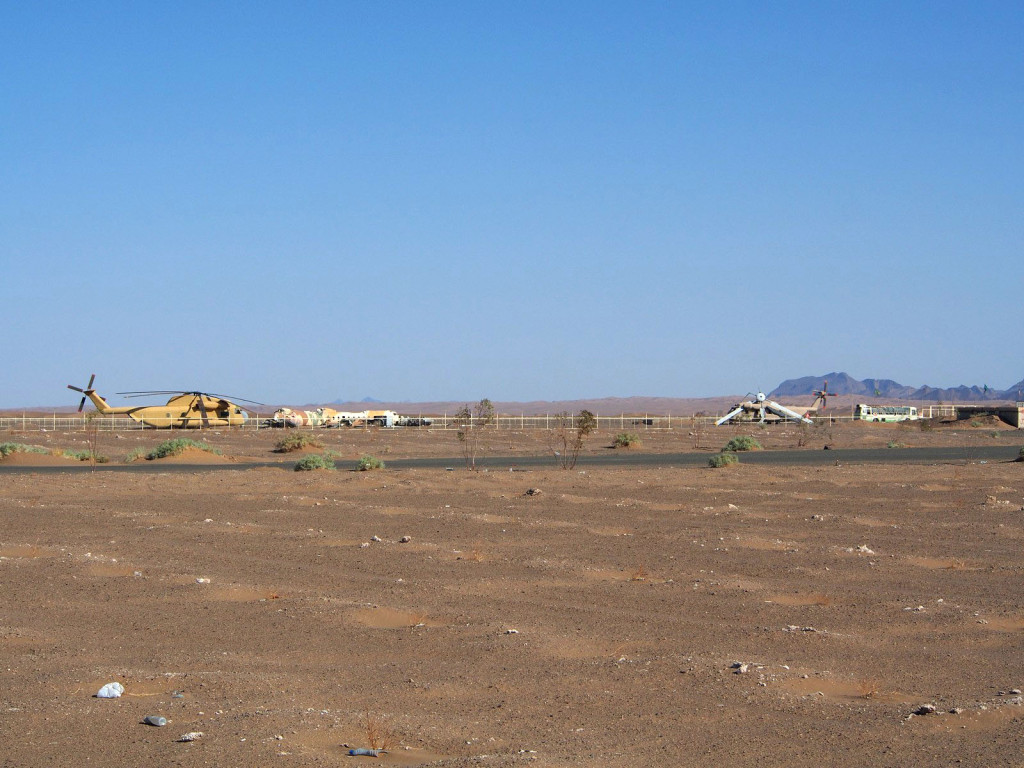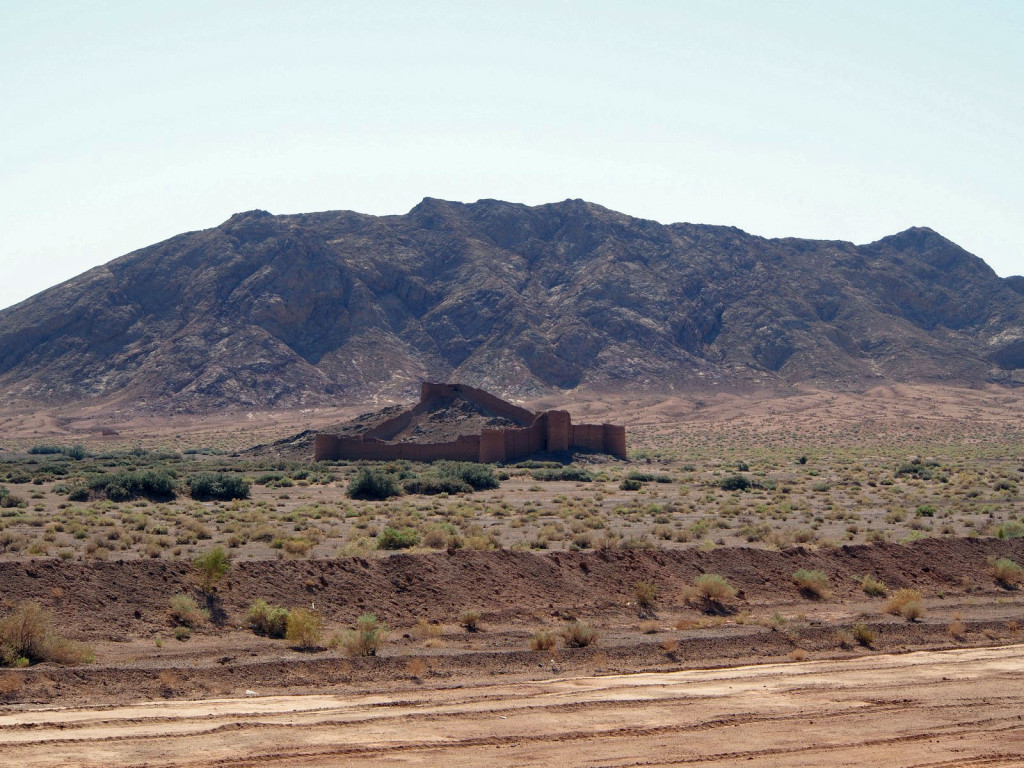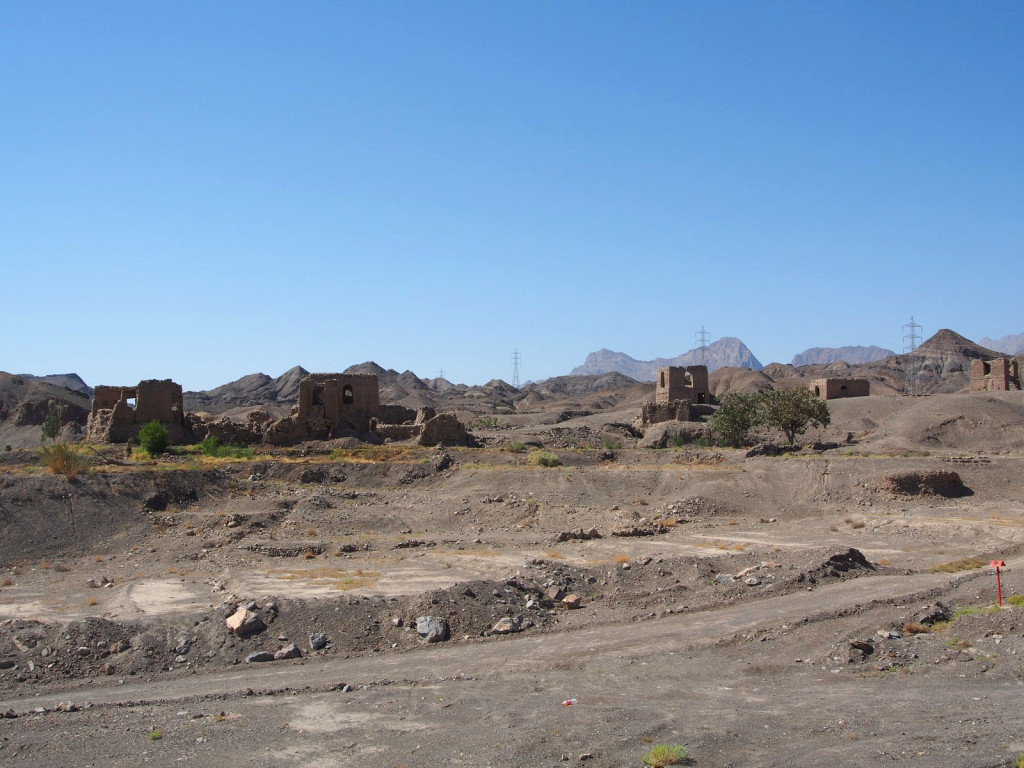Crossing the frontier between Turkmenistan and Iran was a lot less fraught than entering Turkmenistan. A few hours of standard checks and processes, and we entered into country number 17. There’s a low range of mountains that form the natural border between the two countries, and although there was a heavy fog while climbing the Turkmen side, it cleared as we were at the border and we saw some traditional style villages on the way back down.
As we would soon find out, Iranians are amongst the worst drivers in the world – on par with the Indians. Normal roads signs are not enough to be noticed, so for dangerous corners they need to write on the sides of hills.
As night was falling, we pulled into the first big city, Mashhad. It’s a relatively new city by Iranian standards, growing from a minor town after Mongols destroyed much of the region in the early 13th Century. One of its greatest claims to fame is as a Shia pilgrimage site, only one step down in significance from Mecca or Medina. The Imam Reza Shrine, in the centre of the city, commemorates the eighth Shia Imam, who according to legend was poisoned by the Caliph, jealous of his power. It’s an enormous complex, with similar architecture to the Timurid style mosques of Uzbekistan, spanning across several marble-lined courtyards. (The photos aren’t great quality, as cameras are not allowed, however the staff have no issue with you snapping away with your mobile).
The main prayer area is immense and lined with carpets, on which the thousands of faithful come to pray.
The dome is only painted gold, but the interior of the central alcove is actual gold leaf.
The rest of the decorations are more modern and ostentatious than Samarkand, having been rebuilt and redecorated dozens of times over the centuries. Mirrored mosaic tiles are a particular favourite here.
It’s also spectacularly lit up at night.
We pushed on into the first of the two vast deserts that stretch across Iran. Many of the local buildings are mud brick, and it’s hard to tell whether the ruined building you pass is 30 years old or 300.
For a time, the road shoots off into nothingness, with only the distant crags of low mountains providing a sense of scale.
We rolled into the halfway town of Tabas late in the afternoon, finding a classic ‘oasis in the desert’. The park in the centre of town is a lush green space, with gushing water and even a couple of pelicans in the pond – a welcome change from the sea of sand.
One of the great things about Iran is the locals’ love for camping – their little pop-up tents are everywhere, and wild camping is allowed just about anywhere. We pulled off the road just outside town and set up for the night.
After our short break in the oasis, we pushed on through the desert towards the ancient city of Yazd. The rugged landscape feels ancient and weathered.
An odd incongruence: behind the roadside mosque (a frequent occurrence) was an aircraft graveyard with a few military helicopters on display.
More weathered old structures stand in the middle of nowhere, to recent or unimportant to be mentioned on maps or guidebooks – but they make us wonder as to their history, in a country positively brimming with ancient empires.
After two days of riding through the desert, the ample miles providing opportunity for reflection, we arrived in the ancient city of Yazd, where the central ‘old town’ is a twisting maze of mud-walled alleys.

